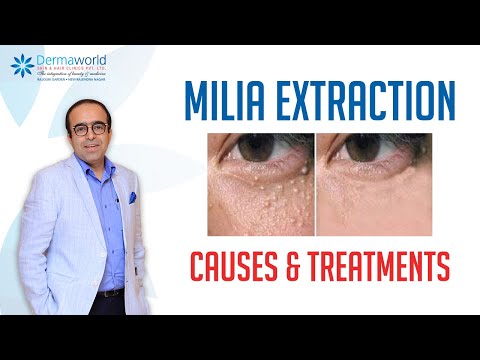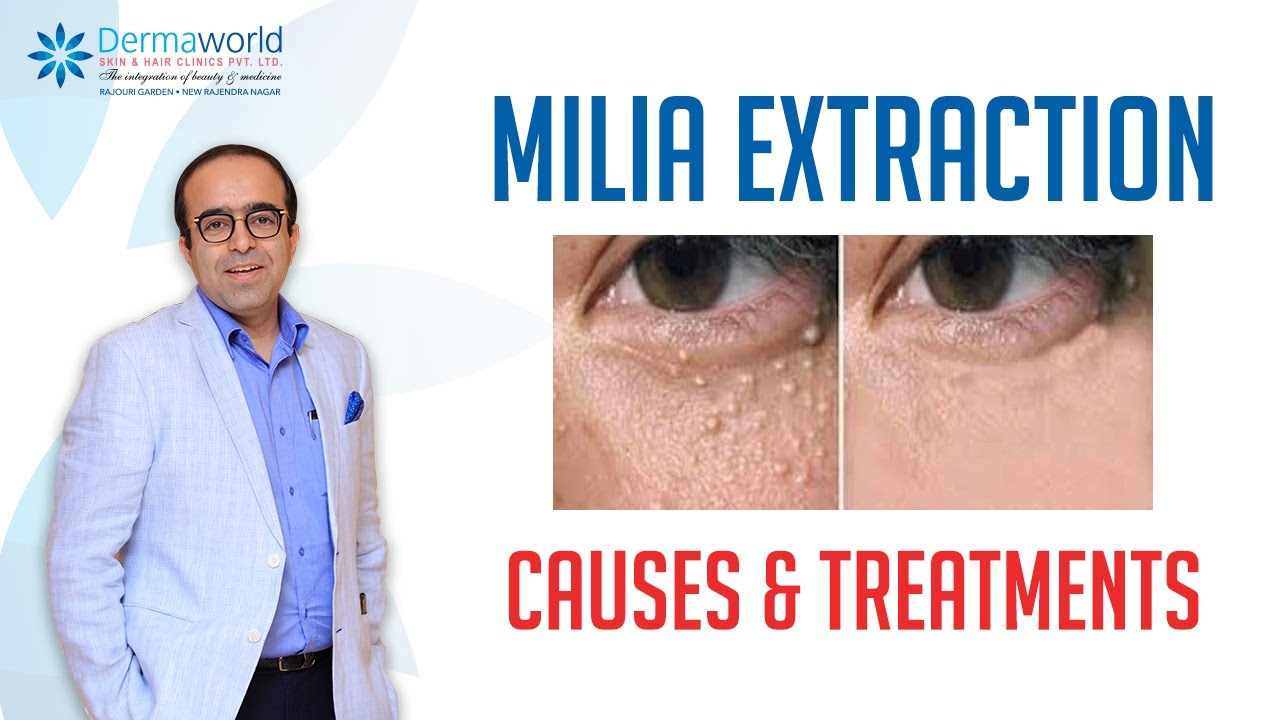Milia around the eyes: Curious about those tiny, pesky bumps that mysteriously appear near your eyes? Discover the intriguing causes behind milia, those minuscule white or yellowish cysts that can be both frustrating and fascinating. Milia, often referred to as “milk spots,” are formed when dead skin cells become trapped beneath the skin’s surface, creating small cysts. These bumps can be caused by a variety of factors, including hormonal changes, excessive sun exposure, use of heavy cosmetics, or even genetics. Understanding the triggers that contribute to milia can help you take control of your skincare routine. By uncovering the secrets behind these tiny bumps, you’ll gain insights into effective prevention and treatment strategies. Explore the intricacies of milia, and find out how to maintain a clear and radiant under-eye area. Say goodbye to those frustrating little cysts and say hello to a brighter, smoother complexion.

Causes of Milia Around Eyes
| Causes | Explanation |
|---|---|
| Blocked Sweat Glands | Milia can occur when sweat glands become blocked, preventing the proper release of sweat. This can lead to the formation of small, white cysts around the eyes. |
| Excessive Sun Exposure | Long-term exposure to the sun’s harmful UV rays can damage the delicate skin around the eyes, causing the formation of milia. Sun damage weakens the skin’s ability to exfoliate naturally, leading to the buildup of dead skin cells and the formation of these cysts. |
| Use of Heavy Cosmetics | Certain cosmetics, especially heavy creams and oils, can clog the pores around the eyes, leading to milia formation. These products may contain ingredients that are too rich or occlusive for the sensitive eye area, causing the buildup of keratin and dead skin cells. |
| Genetic Predisposition | Some individuals may have a genetic predisposition to developing milia. In such cases, the skin’s natural exfoliation process may be slower, making it more susceptible to the formation of these cysts. |
| Physical Trauma or Injury | Any trauma or injury to the skin around the eyes, such as burns, abrasions, or surgical procedures, can disrupt the normal skin cell turnover process. This disruption can lead to the accumulation of dead skin cells in the area, resulting in milia formation. |
Milia Unmasked: Causes, Treatment, and Dr. Rohit Batra’s Expertise
What Causes Milia Around Eyes?
Milia are tiny white bumps that appear on the skin, commonly around the eyes. These small cysts are filled with keratin, a protein found in the outer layer of the skin, and are usually harmless. While milia can occur at any age, they are most common in infants and adults. Understanding the causes of milia can help in preventing and treating these pesky bumps.
1. Clogged Pores
Milia often form when dead skin cells and sebum, the skin’s natural oil, become trapped in the pores. When this happens, the trapped debris can’t escape, resulting in the formation of milia. Clogged pores can be caused by excessive oil production, inadequate exfoliation, or the use of heavy skincare products that can block the pores. To prevent milia caused by clogged pores, it is important to cleanse the skin regularly and use non-comedogenic skincare products that won’t clog the pores.
2. Blistering or Burns
In some cases, milia can develop after the skin experiences blistering or burns. When the skin is damaged, the healing process may involve the formation of small cysts. This is particularly common in individuals who have endured sunburns, chemical burns, or any other type of skin trauma. It is important to protect the skin from excessive sun exposure and to treat any burns or blisters promptly to minimize the risk of developing milia.
3. Genetic Predisposition
Some individuals may be genetically predisposed to developing milia. Certain skin conditions, such as epidermolysis bullosa, a group of rare genetic disorders that cause the skin to be extremely fragile, can increase the likelihood of developing milia. Additionally, if your parents or close relatives have a history of milia, you may be more prone to experiencing this condition. While genetic predisposition cannot be changed, managing other factors that contribute to milia can help reduce their occurrence.
4. Microdermabrasion or Laser Treatments
Microdermabrasion and laser treatments are popular cosmetic procedures used to improve the appearance of the skin. However, these treatments can sometimes result in the development of milia. The suction and abrasive nature of microdermabrasion can cause irritation and subsequent cyst formation. Similarly, laser treatments can disrupt the skin’s barrier function, leading to the accumulation of dead skin cells and keratin. If you are considering these procedures, it is important to discuss the potential risks and side effects with a qualified dermatologist.
5. Use of Heavy Eye Creams
Using heavy eye creams or moisturizers can also contribute to the formation of milia around the eyes. These products are often rich in emollients and occlusive ingredients that create a barrier on the skin, trapping dead skin cells and sebum. Over time, this can lead to the development of milia. To avoid this, opt for lighter, non-comedogenic eye creams that won’t clog the delicate skin around the eyes.
In conclusion, milia around the eyes can be caused by various factors such as clogged pores, blistering or burns, genetic predisposition, microdermabrasion or laser treatments, and the use of heavy eye creams. Understanding these causes can help in preventing and managing milia. If you are concerned about the appearance of milia or experiencing any skin-related issues, it is always best to consult with a dermatologist for proper diagnosis and treatment.

